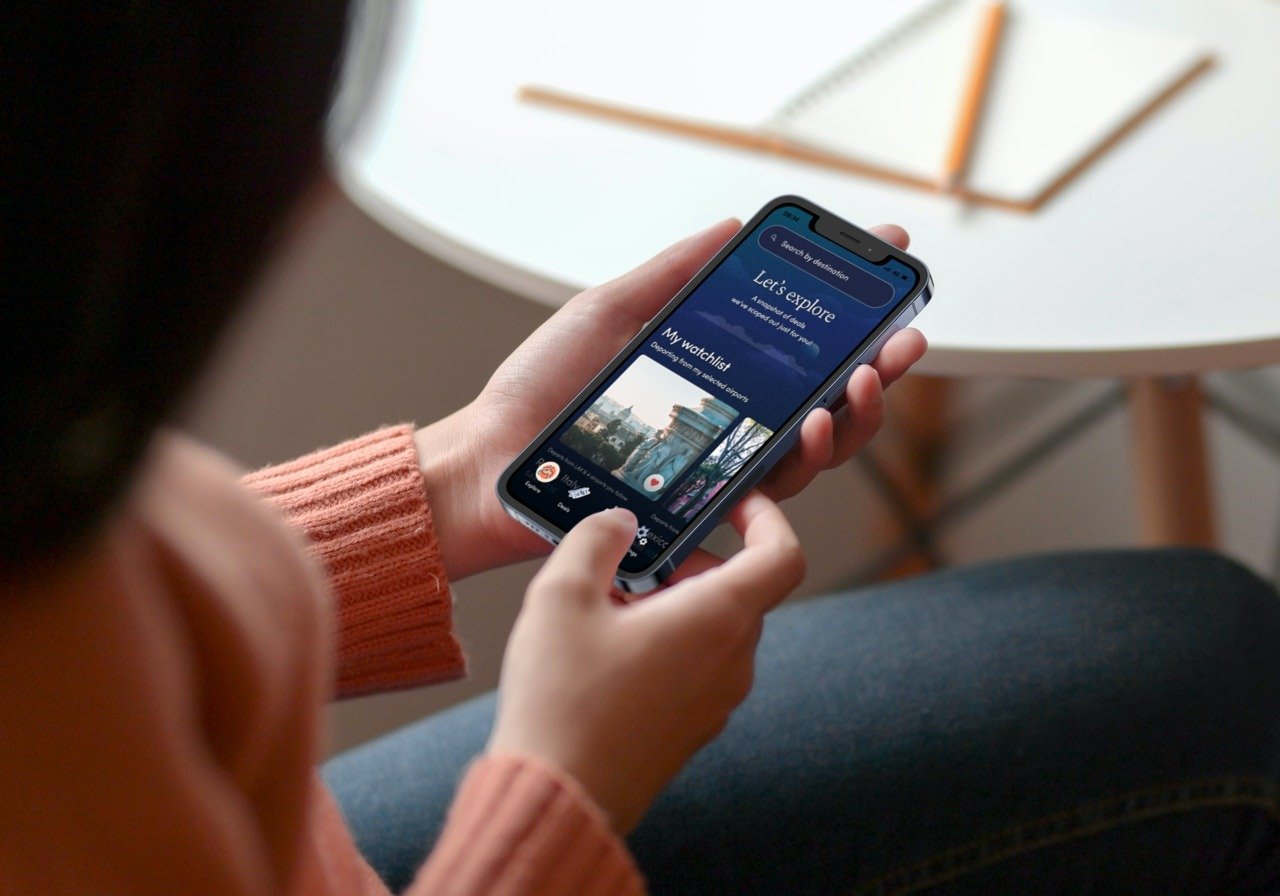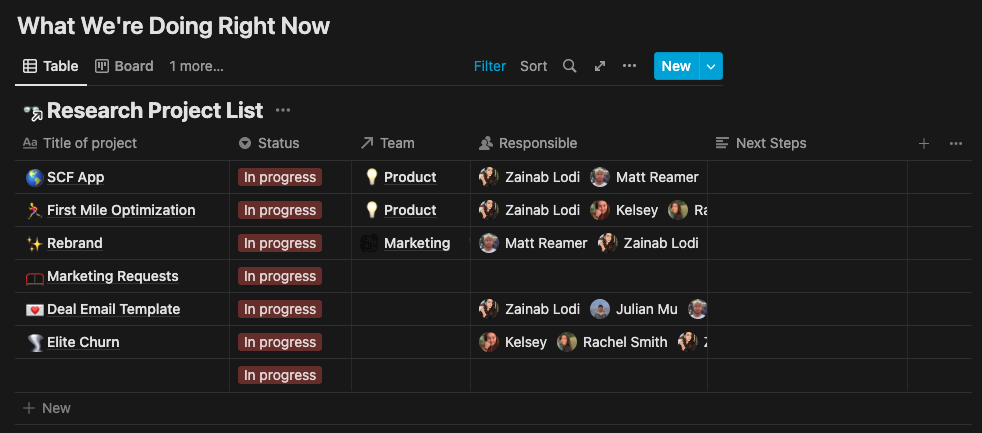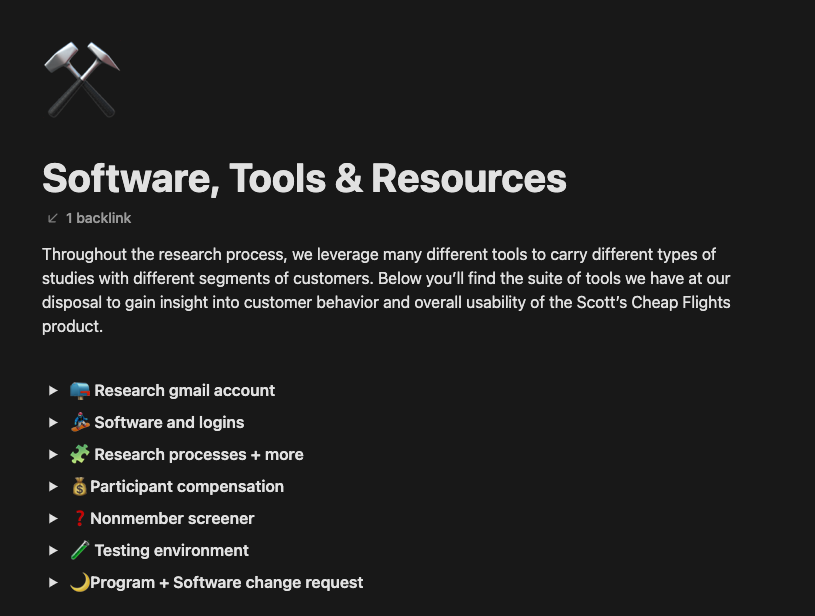Scott’s Cheap Flights
Building Product Design & Research from the ground up

Exec Summary
Brand
Scott’s Cheap Flights
Role & Responsibilities
Director, Product Design & Research
What
Coming into SCF as their first Director of Product Design it was like a deserted island of design. 6 months before I joined, 2 designers that held down the fort left and design was held up by contractors that came and went. I knew I had my job cut out for me in building back the design team, introducing research as a core design and product discipline and crafting culture in which drove designers to want to design with us at SCF.
My main priorities were too…
Establish working design and experience principles
Craft frameworks and toolkits that set designers up for success
Evangelize the importance of thoughtful design and the impact of research in the product and design process
Hire a bad ass team that were passionate about making helpful, delightful and fun products for our Members
Define Design Ops Standards
Being the only designer and working through hiring a full team, there was a lot to do. I started by assessing what process and structure was in place already and organizing, unifying and setting guidelines for the eventual team I would be onboarding. SCF was a very illustration heavy brand with a splash of destination photography that's inspirations wonder and a desire to adventure. The only problem was that Figma was all over the place. Files were all organized differently from the various contractors who had been working the years prior so I worked quickly to go file by file and organize…
File Structure
Setting a file page and organization structure is important because, as we grow and collaborate with others in the company, we need to make it easy to access designs and easily differentiate between what is WIP, what’s in prod and split out the different processes of the design flow.
Design System Structure
Hunting and gathering various components used across the designs and performing cut up exercises with engineers enabled me to unify the components used across the 30+ design files and organize into a consumable and 1:1 with dev Design Library for the team to branch off and iterate from. Following an Atomic Design method, I organized all components and broke them down by Token, Atom, Molecules and Organisms. Each with there own component and component groups, leveraging auto layout, so that updating and iterating in the future would be much more simple.
Componentizing & Layering
Organizing and proper file maintenance is very important when we look for efficiency in the design process. I went file by file, matching components and foundational atoms and tokens to the newly minted Design
Defining and organizing form elements in the Design Library in both light mode and dark mode.
Defining, organizing and management of the SCF illustration language and presentation
Along with organizing and codifying the design library for designers, it was equally as important to create a strong shared understanding and passion for the Design System with out engineering peers. We set up rituals on a bi-weekly basis to walk through WIP, identify connection points across projects the product teams were doing and workshop various components.
Most recently, I’ve been hyper focused on documentation around accessibility standards and process, along with process in how and where we use third party logos and sourcing of imagery.
Amplify & Evangelize Research
Upon entering SCF, the Product Org did not conduct much research. Everyone realized there was value in research but there was no clear path or process given to the discipline. For the first few months there, I met with all different parts of the company to understand what research meant to them and how they’ve seen it implemented successful (or not) at SCF in the past. There were 0 tools and frameworks set in place, so I began to craft an open form in Notion where others in the company could always peak in, understand what research is, how it applies to our Product development process, and what’s in-flight from a research POV. Additionally, we want to create a place to archive past research so it was always accessible and within fingers reach. Check some of the screenshots below of how we, at SCF organize and share out research.



Once a framework and structure was established and recruiting was underway for our first UX Researcher that would join the team, we began to met with different companies like; Usertesting.com, Userzoom, Clicktail, User Interviews, etc and understand how we might sign for software that would enable our Product Teams and Researchers to collaborate at the highest-level while also automating a lot of the fulfillment and recruiting process that goes along with research. You might call this, research ops.
We ended up going with the research stack of…
User Interviews
A tool we used to recruit members and non-members into our own panel to participant in moderated and unmoderated testing and use to automate fulfillment and recruiting processes. When we do moderated testing through Zoom, we also leveraged a tool called Grain that would take the Zoom recording and transcribe it for us.
Lookback.io
We leveraged Lookback.io to be our unmoderated testing tool that would allow us to craft tests, send out to participants and later view their sessions to create clips, share with members of the team and archive for later usage.
Additionally, I helped add various other tools like into our kit including; Grain, Miro, Full Story, PollFish, Survey Monkey and, oddly enough, Instagram for research as well.
Instagram is an interesting one, as we were in a unique position and had a VERY engaged user base on social, we figured we should leverage that advantage. We began to frequently post smaller research survey on Instagram through Stories and get 4-5k responses within 24 hours! Anything from free response questions, to multiple choice to this or that. Very quick and easy way to connect with that sub-set of our member base and understand, quickly what they are thinking.
An example of a social survey. Here are 2 questions of the 6 we asked in this one.
Building a team
As I said before, starting from scratch was a bit of a blessing in disguise as it allowed to survey the land and take my time assessing what would be the best way to set a company like SCF up for success for design and research. As you can imagine, between all of that foundational work and being the sole IC for 3 product teams….I needed back up. BUT, with the pre work done, I could ensure my future team would be set up for success.
After working through a vision for the design and research org, we began to scope out roles and recruit. Before you would know, we were onboarding 2 new designers and SCF’s FIRST UX Researcher!
If you’d like further details about specifics features, research or whatever, feel free to reach out! BUT, Below you’ll find random comps and screenshots of work.








